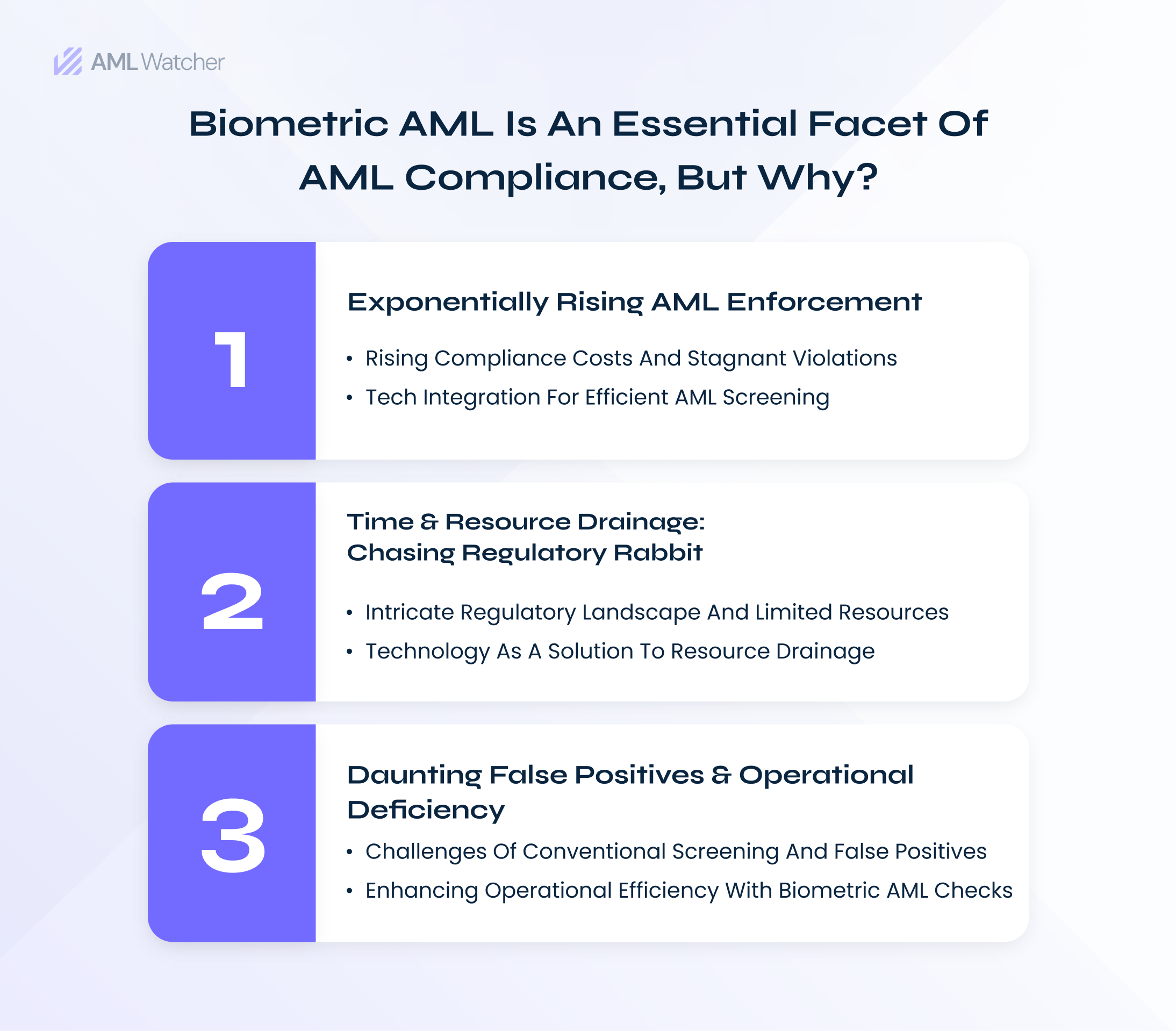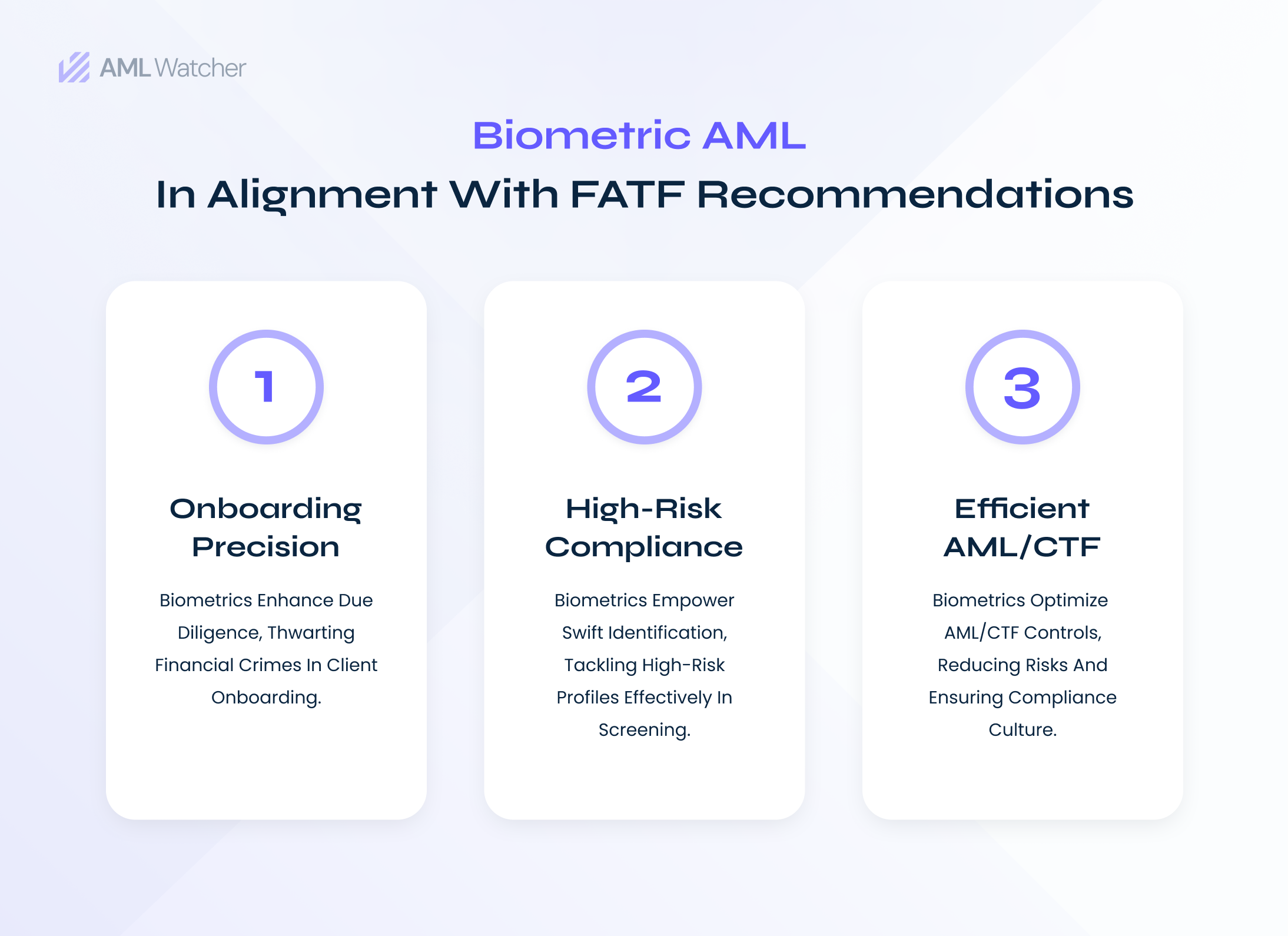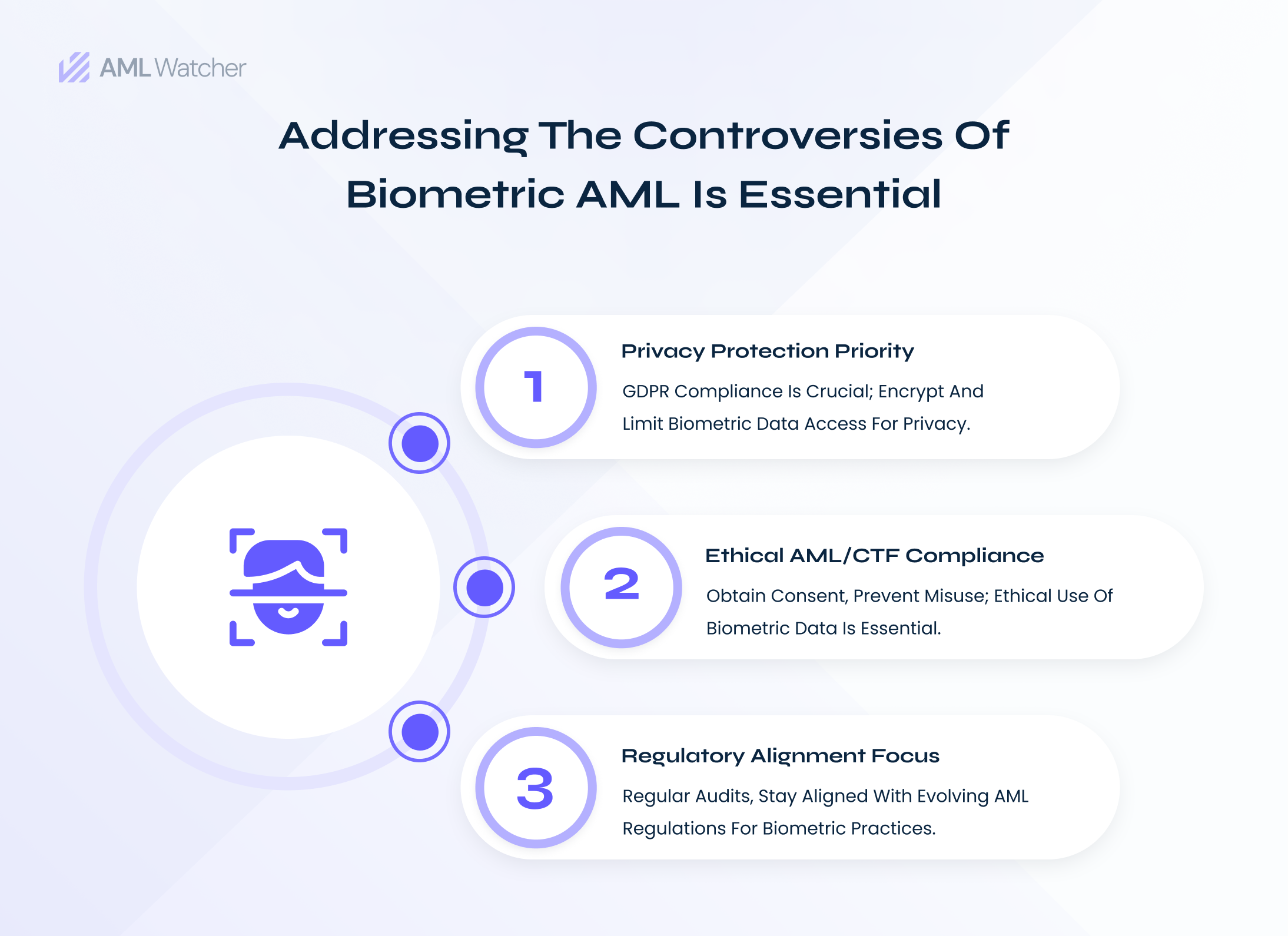
Biometric AML: A Transformed Digital Future of AML Compliance
Empowering the conventional anti money laundering procedures, biometric AML screening is a state of the art advancement that allows institutions to comply with AML compliance and curb money laundering and terror financing. With the endorsement of more vigilant AML measures and winning the regulatory games, Central Bank of United Arab Emirates (CBUAE) issued a new rule to employ digital verification in their existing AML policies and processes, implemented from Jan 2023.
What makes the institutions embed biometric AML into their compliance procedures? The immeasurable magnitude of money laundering roughly estimated as $300 billion being laundered through the United States each year while the non-compliance cost ($5 billion fines) was recorded in the year 2023, stated by the US Securities and Exchange Commision (SEC).
Aiming to explore AML risk reduction and compliance pressure, this blog will aid you in wrapping your head around the technical interference of biometric AML monitoring to ease the operational and compliance burden which might leave you clueless at times.
What is Biometric Screening in AML Compliance?
Integration of biometric technology in its true sense allows the identification of an individual through facial recognition or fingerprint while reducing the risk of identity theft and fraud. Comprehensively equipping the client screening, biometric features of compliance tools screen the name and image of the subject against various barred and sanction lists to avoid compliance violations by facilitating potential threats.
Enhancing the scrutiny layers against compliance threat, image matching significantly reduces the most overwhelming screening challenge of false positives and wasting time in filtering out the required name from a long list of individuals sharing the same name.
Motivation Behind Biometric Integration into AML Checks
Exponentially Rising AML Enforcement
The surging rise in compliance cost estimated to be £34.2 billion spent by the financial sector in the United Kingdom highlights the compliance pressure and integration of technology in meeting growing AML requirements in the fight against financial crimes. In spite of the gradually rising cost for compliance each year, the violations to AML compliance has been a stagnant challenge for institutions. Published by Fintech Future, the enforcement cost saw a 30% increase in the third quarter of 2023 amounting $5.6 billion AML fines. The year when humans have trespassed the boundaries of the universe and landed their ships on the moon, the enforcement reactions show the struggle of institutions in meeting compliance and curbing financial crimes. The grave state of affairs highlights the need for appropriate and efficient technology integration into screening tools which must lower the operational and regulatory overheads, while biometric AML screening offers a promising solution.
Time & Resource Drainage: Chasing Regulatory Rabbit
To stem the tide of financial crimes and their facilitators, in 2023, SEC registered 784 enforcement actions which were 3% more than the year 2022. The intricacy of changing regulatory landscape with limited resources, business constraints, and outdated to no compliance tools at all create a great deal of resistance in implementing a functional compliance program.
Supporting the said fact, Likehoded, president at Corlytics (UK based RegTech firm) opinionated that,
“In regulatory monitoring, teams spend 75% of their time reading irrelevant regulatory updates. That is 75% of the time that could be spent on value-add tasks”.
The integration of technology which reduces the time and resource depletion in compliance is crucial more than ever.
Daunting False Positives & Operational Deficiency
The conventional screening using the name and date of birth can cause redundancy in results and overwhelming false positives which requires compliance officers to go through each alert and separate milk from water. Increased false positives have been a challenge for institutions while implementing robust compliance measures where the resource consumption is estimated to be more than $3 billion each year to cater the huge AML alerts (95%).
Similarly, the operational efficiency is greatly impacted when it comes to case management with risk profiling of each client, pushing the regulatory and business bodies to enhance tech interference into compliance tools. With the employment of biometric AML checks, not only the false positives are addressed, but the case management is significantly improved with distinct image attachment on each case.
Regulatory Endorsement and Biometric AML
Required by the Financial Action Task Force (FATF), biometric AML solutions designed with name and face matching technology enforces the active employment of enhanced due diligence and risk based compliance measures to fight against financial crimes. Inherited to meet FATF recommendations 10, 12-15, and 18, biometric technology addresses the below areas of compliance.
Onboarding and Customer Due Diligence
Facilitating the firms with precise identification of clients before onboarding, biometric technology meets the regulatory requirements of conducting a robust due diligence to prevent the financial crimes and fraud threats.
Compliance Against High-Risk Profiles
Biometric technology integration into screening tools empowers the compliance against high-risk profiles and complex to trace associations of politically exposed persons (PEPs). The biometric screening process utilizes a distinct image of the subject and helps firms to find what they are looking for without bushing around.
Enhanced AML/CTF Controls
The compliance to FATF recommendations 18 to optimize control for AML/CTF protocols in mitigating the cross-border financial risks can be achieved through biometric technology which ensures an efficient screening using facial recognition and reduces the occurrence of false negatives and associated risks. While promoting an effective compliance culture, the introduction of biometric features offers compliance benefits as explained in below visual.
How is Biometric AML Controversial?
The dire need of advanced and automated technology to overcome the compliance challenges is non-negotiable, however, it is equally important to uncover the underlying concerns and controversies of biometric AML compliance needs which includes,
Privacy Protection of Customer Data is Pivotal
Compliance to the General Data Protection Regulation (GDPR) is as imperative as compliance to AML regulations. The privacy concerns related to appropriate data handling requires the compliance officers to keep the biometric data encrypted and accessible to authorized persons only. Presence of enhanced privacy measures ensures the clients that their biometric data will remain confidential even if compromised.
Ethical Compliance Matters
Prevention of financial crimes through biometric technology attributes to the significant employment of compliance, but the deployment of ethics in compliance can not be ignored. It requires getting informed consent of clients before using their biometric data for AML/CTF purposes, ensuring the data will not be used other than the said purpose. Misuse of the collected data must be prohibited through the implementation of robust privacy policies.
Regulatory Alignment is Paramount
Along with establishing efficient measures to fight financial crimes, institutions are required to find a balanced spot in the evolving regulatory landscape. To keep pace with regulatory standards, the regular audits and assessments of AML tools must be ensured to stay aligned with domestic and global compliance requirements. The biometric AML practices need to address and accommodate these growing challenges of technology and regulations.
Biometric Advancements and Future of AML Compliance
The evolution of compliance has seen an enormous shift in technology use where tools are being designed to make the detection of corrupt actors easier than before. The automation of artificial intelligence and machine learning into compliance tools presents a somewhat bright future of AML compliance. In addition to AI/ML, biometric identification of individuals in screening processes is having a fair fame where technology is aiming to perform identification through DNAs. Coupled with inter and intra coordination of jurisdictions, the standardization of regulations and easy yet efficient compliance tools can be frontline defense against global financial crimes.
Also Read: Biometric AML: A Vital Ally for Financial Crime Compliance and Enforcement
What AML Watcher Can Do For You?
Empowering the existing screening protocols, AML Watcher is consistent to make compliance as easy as identifying black among whites. With the introduction of biometric AML in the screening interface, AML Watcher has made the risk mitigation and threat identification more resilient and easier. Integrated with robust privacy protocols and tech embedded algorithms, the ethical deployment of compliance and reduced false alerts are ensured with biometric AML screening.
Learn more about how you can win the regulatory games while thriving in the global business community with AML Watcher and contact us to stay above the medicores.
We are here to consult you
Switch to AML Watcher today and reduce your current AML cost by 50% - no questions asked.
- Find right product and pricing for your business
- Get your current solution provider audit & minimise your changeover risk
- Gain expert insights with quick response time to your queries





